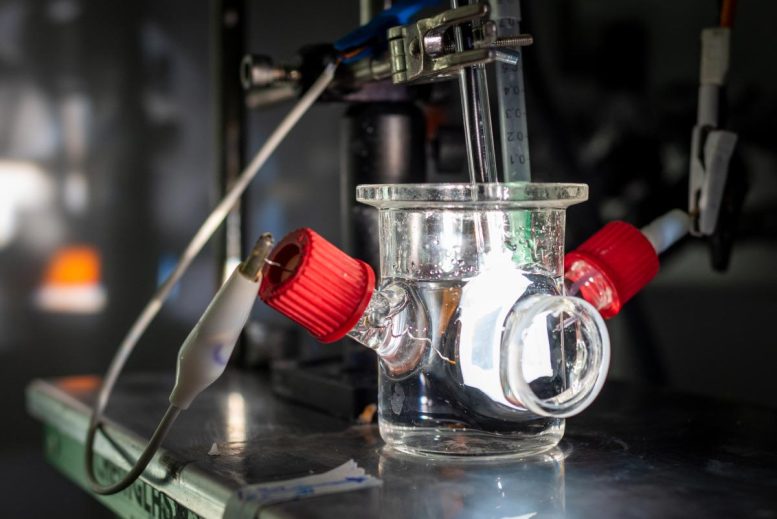
A model solar fuels device called a photoelectrochemical cell. A research team led by Francesca Toma, a staff scientist at the Liquid Sunlight Alliance in Berkeley Lab’s Chemical Sciences Division, designed the model. Credit: Thor Swift/Berkeley Lab
Discovery significantly improves stability in ethylene and hydrogen production via artificial photosynthesis.
A research team has developed a new artificial photosynthesis device component with remarkable stability and longevity as it selectively converts sunlight and carbon dioxide into two promising sources of renewable fuels – ethylene and hydrogen.
The researchers’ findings, which they recently reported in the journal Nature Energy, reveal how the device degrades with use, then demonstrate how to mitigate it. The authors also provide new insight into how electrons and charge carriers called “holes” contribute to degradation in artificial photosynthesis.
“By understanding how materials and devices transform under operation, we can design approaches that are more durable and thus reduce waste,” said senior author Francesca Toma, a staff scientist in the Liquid Sunlight Alliance (LiSA) Berkeley Lab’s Chemical Sciences Division.
For the current study, Toma and her team designed a model solar fuels device known as a photoelectrochemical (PEC) cell made of copper(I) oxide or cuprous oxide (Cu2O), a promising artificial photosynthesis material.
Cuprous oxide has long puzzled scientists, because the material’s strength – its high reactivity to light – is also its weakness, as light causes the material to break down within just a few minutes of exposure. But despite its instability, cuprous oxide is one of the best candidate materials for artificial photosynthesis because it is relatively affordable and has suitable characteristics for absorbing visible light.
To better understand how to optimize the working conditions for this promising material, Toma and her team took a closer look at cuprous oxide’s crystal structure before and after use.
Electron microscopy experiments at the Molecular Foundry confirmed that cuprous oxide quickly oxidizes or corrodes within minutes of exposure to light and water. In artificial photosynthesis research, researchers have typically used water as the electrolyte in the reduction of carbon dioxide into renewable chemicals or fuels, such as ethylene and hydrogen – but water contains hydroxide ions, which leads to instability.
But another experiment, this time using a technique called ambient pressure X-ray photoelectron spectroscopy (APXPS) at the Advanced Light Source, revealed an unexpected clue: cuprous oxide corrodes even faster in water containing hydroxide ions, which are negatively charged ions comprised of an oxygen
relaxing sleep music